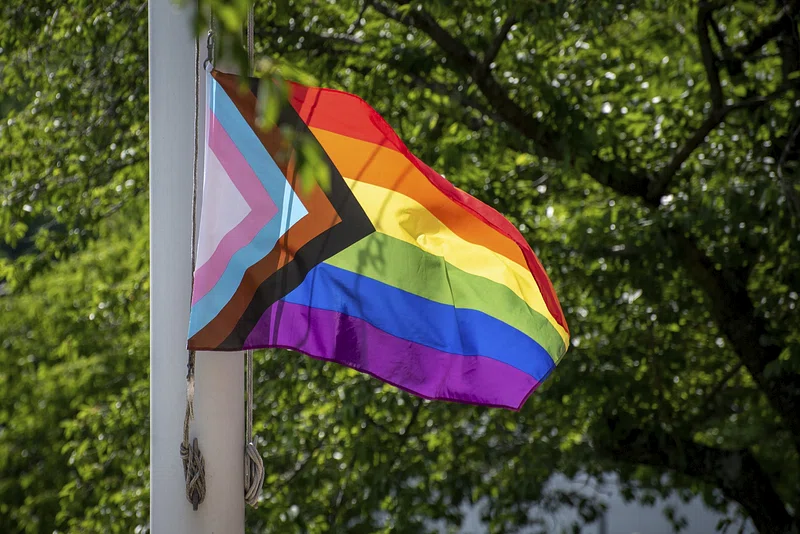Written by Emily Yisa, Disability Services Project Coordinator and Educator
Pride Month 2023
June is Pride Month. It is a month to honor the 1969 Stonewall Uprising in Manhattan and to commemorate the LGBTQ+ community’s resilience, diversity, and achievements. It serves as a platform for raising awareness, fostering acceptance, and advocating for equal rights and opportunities for all individuals, regardless of their sexual orientation or gender identity. There will be celebrations that will take place this month, including pride parades, parties, picnics, workshops, concerts, and more. There are also memorials to remember and honor those in the community who have been lost to HIV/AIDS or hate crimes.
LGBTQ+, Disability, and Violence
While recognizing and celebrating Pride Month, it is of equal importance to acknowledge the intersection of LGBTQ+, disability, and violence. The prevalence of disability in LGBTQ+ youth can vary depending on various factors, including the specific disabilities being considered, the population studied, the methodology used, and violence related disabilities. However, LGBTQ+ youth are more at risk for experiencing mental health disabilities such as depression, likely due in large part to how they are mistreated, bullied, or stigmatized.
According to The Trevor Project, LGBTQ+ youth are “four times more likely to attempt suicide than their peers” and according to a 2022 national survey, 45% of responding LGBTQ+ youth had seriously considered attempting suicide in the past year.[i]
LGBTQ+ youth are at increased risk of experiencing violence or abuse (e.g., bullying, harassment, sexual assault, and physical assault). One study showed that 18% of the LGBTQ+ youth that responded, had experienced physical dating violence, 34% were bullied at school, and 10% were threatened and/or injured with a weapon at school.[ii]
Supporting LGBTQ+ Youth
It is critical that LGBTQ+ youth have access to people and communities that care about and support them. Some ways to support LGBTQ+ youth include:
- Listen well and do not make assumptions about their sexual orientation or gender identity.
- Be kind and inclusive and if you hear hate speech speak up.
- Vote for people who support LGBTQ+ youth.
- Read more about LGBTQ+ issues.
- Attend LGBTQ+ events (there will be lots happening during Pride Month!)
- Wear or display LGBTQ+-friendly stickers, posters, t-shirts or buttons
- Display/share pronouns (make this the norm)
Below are a couple of examples of positive outcomes of supporting LGBTQ+ youth. These examples come from SAFE’s pilot testing of our curriculum titled, My Rights My Life (a healthy relationship and safer sexuality curriculum for adults with disabilities).
- One student who participated in SAFE’s My Rights My Life class pilot testing is now describing themselves as “they” instead of “she”. This student is an outspoken advocate for LGBTQ+ community members and other transgender individuals. The student became very attentive and enthusiastic when SAFE class facilitators discussed sexual orientation, gender identity, and gender expression. This is just one of many examples that is validating our decision to ensure that the curriculum is gender inclusive and trans-friendly. The student had already attempted to connect with OutYouth, but because of their disability, they had a hard time doing so online. SAFE invited OutYouth to a Leadership and Advocacy Fair, and this student was able to make an in-person connection that can provide community and support as they transition their gender and think about dating.
- One teacher, working with a student in job readiness classes (18-22 years of age), shared how valuable it had been for SAFE project staff to talk about LGBTQ+ identities in the My Rights My Life classes. The teacher shared that this student, who is transgender, had a positive experience as a result of the classes. Further, this student’s teachers believe that other students became more supportive of him, using his correct name and pronouns and not bullying him, because we normalized transgender and other gender and sexual identities in our classes. The teacher shared that it was valuable for this transgender student to see himself represented, and it was also valuable for the other students to understand that being transgender can be part of the human experience.
[i] The Trevor Project. (2021, December 15). Facts About LGBTQ Youth Suicide. The Trevor Project; The Trevor Project. https://www.thetrevorproject.org/resources/article/facts-about-lgbtq-youth-suicide/ [ii] Centers for Disease Control and Prevention. (2017, June 21). LGBT Youth. Centers for Disease Control and Prevention. https://www.cdc.gov/lgbthealth/youth.htm






